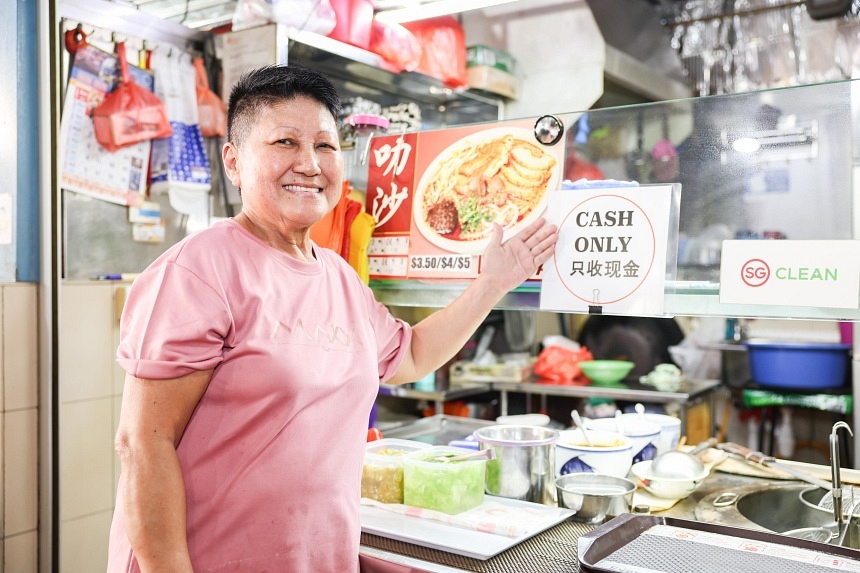Some have also been put off by latency issues where the transaction takes some time to go through, especially during peak hours, he said.
But those who have gone digital say e-payments are convenient. Some even reported an increase in sales, particularly from younger customers.
Ms Madeline Chen, who operates a braised pork stall on her own in Chinatown Complex Market & Food Centre, said digital payment reduces the hassle of handling cash, especially when she is busy. “Some of my regulars even took a photo of my SGQR and pay me before they come to pick up their food,” said the 46-year-old.
Mr Lim Yaw Fook, who sells prawn noodles in Bendemeer Market & Food Centre, said sales have increased by about 20 per cent since 2020 when he started using SGQR, as more younger customers have started to patronise his stall.
Mr Lim, 70, said some of his customers from China also prefer to use SGQR, which works with China-based apps Alipay and WeChat Pay.
Some hawkers use their personal PayNow QR code or mobile number – instead of SGQR – to receive payments. PayNow is an instant funds transfer system that links users’ mobile or NRIC numbers to their bank accounts.
“It is not hard to use and the money goes straight into my bank account,” said 67-year-old hawker Sam Tan, who has a fish head dish stall at 75 Lorong 5 Toa Payoh.
Thus, the pool of digitalised hawkers may be larger than the reported 11,500.
Citing a report, Dr Lee Yen Teik, a senior lecturer in finance at NUS Business School, said 87 per cent of small businesses reported improved operations after adopting digital payments, such as better customer retention.
However, he said any transaction fee will eat into hawkers’ already-slim profit margins amid today’s high inflationary environment.
Indeed, Mr Jaleel Sheikdawood, 42, owner of an Indian food stall at Albert Centre Market and Food Centre, said he uses PayNow because it is free, and he will switch out of digital payment tools if he needs to pay a transaction fee.
Enterprise Singapore and SG Digital Office said the Hawkers Go Digital subsidy was introduced to kick-start the adoption of e-payments.
When asked if the waiver would be extended for good, they said the Government will assess the situation before they decide on the next steps for the programme beyond 2025.
Associate Professor Cindy Deng, co-director of the Centre for Sustainable Finance Innovation at NTU’s Nanyang Business School, said digitalisation helps to reduce the risk of theft and improve record keeping.
But cash still has a place in society, she said. “Cash remains important for the older generations today, and also serves as a reliable backup during events like disruptions to digital infrastructure.”

